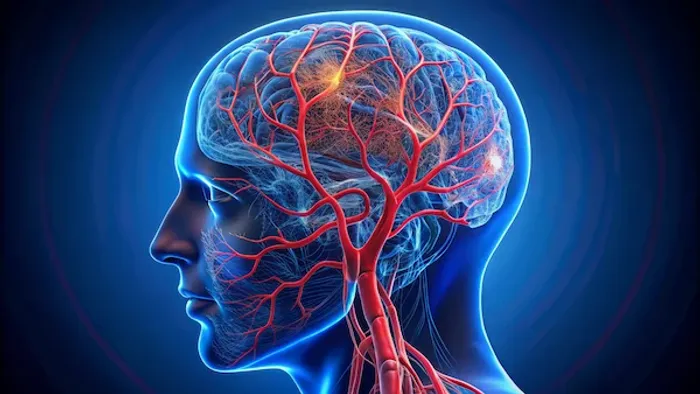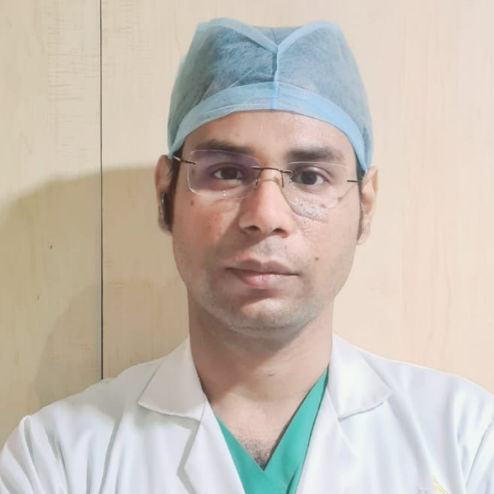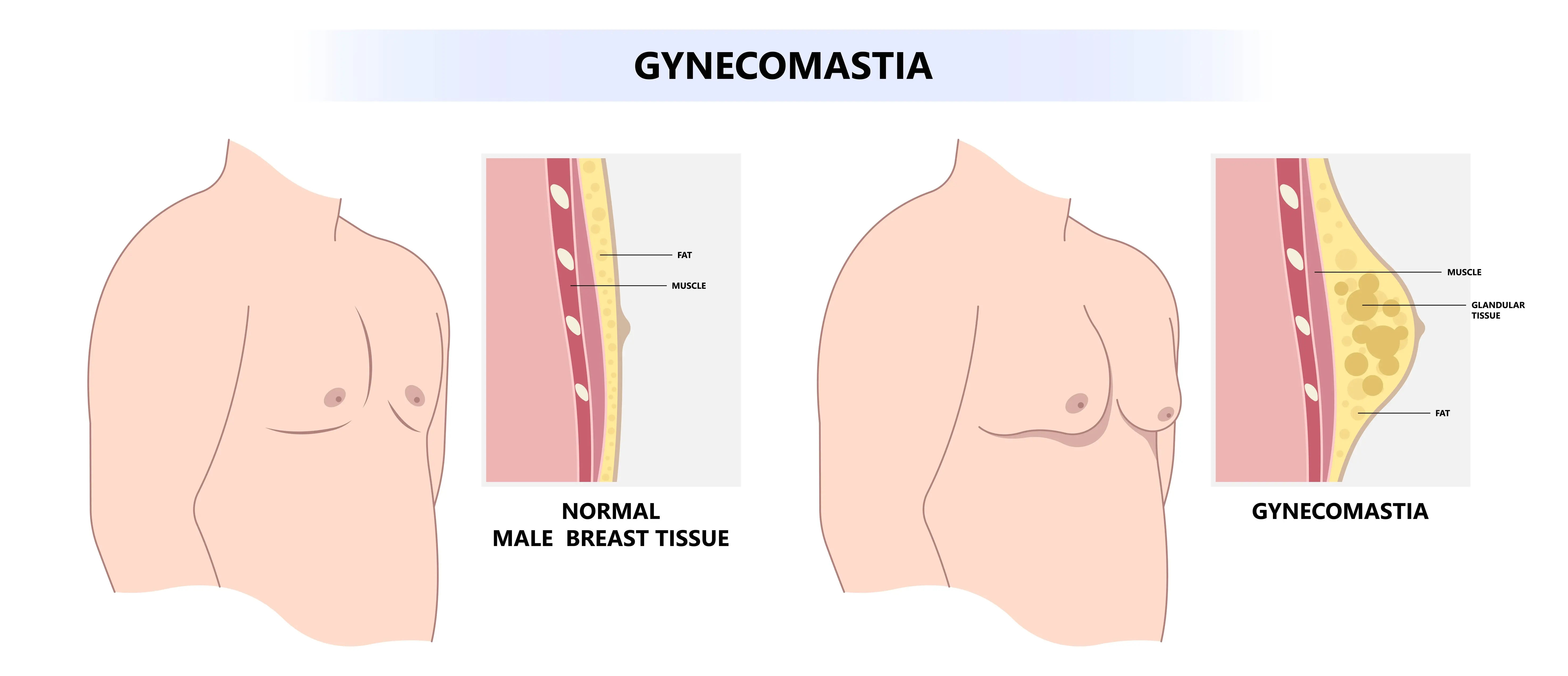Guide to Interventional Neurology
Explore the field of Interventional Neurology, which uses minimally invasive, image-guided techniques to treat complex neurological conditions like stroke, aneurysms, and vascular malformations.

Written by Dr. Dhankecha Mayank Dineshbhai
Reviewed by Dr. Vasanthasree Nair MBBS
Last updated on 23rd Oct, 2025

Introduction
Interventional neurology blends neurology, radiology, and neurosurgery to treat brain, neck, and spinal blood vessel problems using tiny catheters and imaging instead of open surgery. If you or a loved one has been told you might need a “neurointerventional” procedure—or you’re trying to understand options for stroke, brain aneurysms, carotid artery disease, or arteriovenous malformations—this guide is for you.
In plain language, we’ll explain what interventional neurology is, the conditions it treats, how procedures work, and what to expect before and after treatment. We’ll compare approaches like mechanical thrombectomy for stroke and aneurysm coiling versus clipping, share key evidence, and offer tips on choosing a center. You’ll also find quick takeaways, answers to common questions, and visual ideas to help you see how these minimally invasive treatments work. As always, if symptoms suggest a stroke or a medical emergency, call your local emergency number immediately.
How we built this guide: We reviewed the top-ranking web pages on interventional neurology to map the most important questions patients ask and the information leading centers provide. Then we added practical insights and a patient-focused perspective to make everything clear and actionable.
What Is Interventional Neurology? Plain-English Definition
Interventional neurology often called interventional neuroradiology or endovascular neurosurgery is a subspecialty that treats blood vessel problems of the brain, head and neck, and spine using tiny tubes (catheters) threaded through an artery or vein. Instead of opening the skull, clinicians use live X-ray (fluoroscopy) to guide devices to the problem site, where they can remove a clot, seal an aneurysm, open a narrowed artery with a stent, or block abnormal vessels feeding an arteriovenous malformation.
You’ll see a few names used:
- Interventional neurology: often referring to neurologists trained in catheter-based neurovascular care.
- Interventional neuroradiology: typically radiologists specializing in minimally invasive neurovascular procedures.
- Endovascular neurosurgery: neurosurgeons with catheter-based neurovascular expertise.
In most hospitals, these clinicians work as one team—sometimes called “neurointerventional” or “neuroendovascular” with shared training pathways and overlapping skills. The key unifying feature: minimally invasive, image-guided treatment of neurologic blood vessels.
Why it matters to patients:
- Smaller incisions (often a wrist or groin puncture) and faster recovery.
- Life-saving and disability-preventing treatments for stroke and ruptured aneurysms.
- Options for complex conditions once treated only by open surgery or not at all.
Common tools and terms:
- Catheters and microcatheters: thin, flexible tubes used to navigate vessels.
- Stent retriever and aspiration catheter: devices to pull or suction clots in stroke.
- Coils, flow-diverting stents, or intrasaccular implants: to treat aneurysms.
- Embolic agents (e.g., Onyx, n-BCA): to close abnormal blood vessels.
- Cerebral angiography/DSA (digital subtraction angiography): the “gold standard” imaging study that maps brain vessels in real time.
Consult a Top Neurologist for Personalised Advice
Conditions Interventional Neurology Treats
Interventional neurology addresses a range of brain, head/neck, and spinal vascular conditions:
- Ischemic stroke: A brain artery is blocked by a clot. Mechanical thrombectomy removes the clot, restoring blood flow. Intravenous thrombolytics (tPA/tenecteplase) may be given first if within the time window.
- Brain aneurysm: A balloon-like bulge in a blood vessel that may rupture and cause subarachnoid hemorrhage. Treatments include coil embolization, flow-diverting stent placement, or intrasaccular devices; surgical clipping is another option.
- Carotid artery stenosis: Narrowing in the neck artery supplying the brain. Options include carotid artery stenting (endovascular) or carotid endarterectomy (surgery).
- Arteriovenous malformations (AVMs): Tangled, abnormal connections between arteries and veins; can cause bleeding or seizures. Embolization can be used alone or with surgery/radiosurgery.
- Dural arteriovenous fistulas (dAVFs): Abnormal artery-to-vein connections in the brain’s coverings; often treated with targeted embolization.
- Intracranial atherosclerotic disease (ICAD): Narrowing inside brain arteries; may be treated with angioplasty/stenting in select cases along with intensive medical therapy.
- Cerebral vasospasm after subarachnoid hemorrhage: Narrowing of blood vessels that threatens brain tissue; treated with intra-arterial medications or angioplasty.
- Tumor embolization: Reduces blood supply to certain head/neck tumors (e.g., meningiomas) before surgery to limit bleeding.
- Nosebleeds (epistaxis) or other vascular shunts: Selected cases may be treated endovascularly when standard methods fail.
Not every patient with these conditions needs an endovascular procedure. The decision depends on condition severity, timing, anatomy, symptoms, and overall health—often weighed by a multidisciplinary team.
How Minimally Invasive Brain Procedures Work?
Here’s the typical flow for a neurointerventional procedure:
- Pre-procedure evaluation: You’ll review your history, medications (especially blood thinners), allergies (iodinated contrast dye), kidney function, and any recent strokes or bleeding issues. Imaging like CT/MRI and diagnostic cerebral angiography may be used for planning. For some procedures, you’ll need antiplatelet medications beforehand (e.g., aspirin and clopidogrel) to prevent stent-related clots.
- Anesthesia and access: Procedures are done under local anesthesia with sedation or general anesthesia, depending on the case. The clinician enters through the radial artery at the wrist or the femoral artery in the groin. Radial access often allows quicker mobility afterward; femoral access remains common for complex devices.
- Navigation and treatment: Using fluoroscopy and contrast dye to visualize vessels, the team navigates catheters to the target. For a stroke, they may use a stent retriever or aspiration catheter to remove a clot. For an aneurysm, they may place coils inside the aneurysm or a flow-diverting stent across its neck to redirect blood. For AVMs/dAVFs, they inject an embolic agent to seal abnormal channels.
- Safety checks and closure: After treatment, they confirm blood flow and hemostasis (often with a closure device or manual pressure). You’ll recover in a specialized unit with neuro checks.
Recovery timeline: Many patients go home within 1–2 days for elective procedures, though complex or emergency cases (like stroke or ruptured aneurysm) may require longer ICU stays.
Unique insight: Access strategy matters. Radial (wrist) access can reduce certain access-site complications and enable earlier mobilization, especially valuable in older or higher-risk patients. Ask your center about their approach and experience with radial vs femoral access for your procedure.
If you’re scheduled for a procedure, ask about fasting instructions, which medications to continue, and when to restart blood thinners afterward. If lab work is needed (for example, kidney function, lipid profile, or HbA1c as part of vascular risk assessment), Apollo 24|7 offers a convenient home collection to save you a trip.
Stroke Care and Mechanical Thrombectomy
Stroke is a medical emergency. About 87% of strokes are ischemic, caused by a blocked artery. Interventional neurology plays a central role in large-vessel occlusions (LVOs)—blockages in major brain arteries—through mechanical thrombectomy.
Key steps and time windows:
- Recognize stroke signs: Face drooping, Arm weakness, Speech difficulty—Time to call emergency services (FAST).
- IV thrombolysis: If within about 4.5 hours of symptom onset and eligible, IV thrombolytics (tPA or tenecteplase) may be given to dissolve clots.
- Mechanical thrombectomy: For LVOs, clot retrieval within 6 hours is standard for appropriate patients; with advanced imaging selection, certain patients benefit up to 16–24 hours from last-known-well (DAWN and DEFUSE 3 trials). Door-to-groin puncture times and rapid imaging are critical.
What the evidence shows:
- The HERMES meta-analysis found that mechanical thrombectomy significantly improves functional independence compared with medical therapy alone (absolute increase around 19%).
- DAWN and DEFUSE 3 expanded the treatment window by selecting patients with salvageable brain tissue on CT perfusion or MRI.
Devices and techniques:
- Stent retrievers: Expand within the clot and pull it out.
- Aspiration catheters: Suction the clot; often combined with stent retrievers.
- Choice depends on anatomy, clot characteristics, and operator experience.
Outcomes and risks:
When performed rapidly in experienced centers, thrombectomy improves independence and reduces disability. Risks include bleeding into the brain (symptomatic intracranial hemorrhage), vessel injury, and access-site complications. The overall benefit overwhelmingly favors treatment in eligible patients.
Unique insight: Stroke systems of care matter as much as the procedure. Prehospital triage, telestroke programs, and direct routing to comprehensive stroke centers can shave precious minutes. If symptoms persist beyond two weeks after a TIA-like episode (for example, brief weakness or speech problems that resolved), consult a doctor online with Apollo 24|7 for further evaluation and to review prevention strategies; however, any new or acute neurologic symptoms require immediate emergency evaluation.
Aneurysm Repair: Coiling, Stents, and Flow Diversion
Brain aneurysms can rupture, causing subarachnoid hemorrhage—a life-threatening emergency—or be found incidentally before rupture. Interventional options have transformed care:
- Coil embolization: Soft platinum coils pack the aneurysm, promoting clotting inside it.
- Balloon- or stent-assisted coiling: Helps treat wide-neck aneurysms by preventing coils from protruding into the parent vessel.
- Flow-diverting stents (e.g., Pipeline): A high-density stent placed across the aneurysm neck, rerouting blood flow and encouraging the aneurysm to seal over time; often used for large or wide-neck aneurysms.
- Intrasaccular devices (e.g., WEB): Implanted inside the aneurysm, especially for wide-neck bifurcation aneurysms, avoiding the need for a permanent stent.
Evidence highlights:
- The ISAT trial showed that in ruptured aneurysms suitable for either method, endovascular coiling had better 1-year outcomes compared with surgical clipping, with lower early disability and mortality, though slightly higher long-term re-treatment rates.
- For unruptured aneurysms, choice depends on size, location, shape, patient age, and risk factors. Flow diversion has expanded options for aneurysms once considered difficult to treat.
Risks and recovery:
Procedural risks include stroke, bleeding, vessel injury, and, with stents, the need for dual antiplatelet therapy. Most elective cases involve a short hospital stay; ruptured aneurysm care typically requires ICU-level monitoring.
Unique insight: Treatment is increasingly individualized. Some bifurcation aneurysms that previously required stent-assisted coiling can now be treated with intrasaccular devices, potentially reducing the need for prolonged dual antiplatelet therapy—an advantage if you have bleeding risks or pending surgeries. Ask your team how device choice affects your medication plan and follow-up imaging schedule.
Carotid and Intracranial Stenosis: Stenting vs Surgery
Carotid artery narrowing in the neck increases stroke risk. Two main treatments—carotid endarterectomy (CEA, surgery to remove plaque) and carotid artery stenting (CAS, interventional) are both effective in selected patients.
What studies show:
The CREST trial found that the composite risk of stroke, myocardial infarction (heart attack), or death was similar between CAS and CEA in symptomatic and asymptomatic patients, but periprocedural stroke risk was higher with stenting, while heart attack risk was higher with surgery. Age influences outcomes: younger patients tended to do as well or better with stenting; older patients often did better with surgery.
In asymptomatic patients, decision-making emphasizes optimal medical therapy (statins, antiplatelets, blood pressure and diabetes control) and careful selection for intervention when risk is high.
Intracranial atherosclerotic disease (ICAD):
Intensive medical therapy is the foundation. Angioplasty and stenting may be considered in select patients who continue to have symptoms despite best medical management, but careful selection is crucial because earlier trials showed higher complication rates when used broadly.
Unique insight: The best choice isn’t one-size-fits-all. Anatomy, age, heart health, operator experience, and center volume influence risk/benefit. A multidisciplinary team review (neurologist, neurointerventionalist, vascular surgeon) helps tailor the decision to your goals and risks. If you’ve been told you have carotid narrowing, discuss both procedural and non-procedural options—and ensure risk-factor control (LDL, blood pressure, HbA1c). Apollo 24|7 offers home collection for lipid profile and HbA1c to support your prevention plan.
AVMs, dAVFs, and Other Vascular Conditions
Arteriovenous malformations (AVMs):
- AVMs are tangles of abnormal arteries and veins that bypass normal capillaries. They may present with bleeding, seizures, or headaches, or be found incidentally.
- Treatment options include endovascular embolization (injecting liquid embolic agents like Onyx or n-BCA), surgical removal, radiosurgery, or combinations. The approach depends on size, location, venous drainage patterns, and rupture status.
- Embolization can reduce AVM size before surgery/radiosurgery or sometimes cure small, selectively targetable AVMs.
Dural arteriovenous fistulas (dAVFs):
Abnormal shunts in the brain’s dura can cause pulsatile tinnitus, headaches, or hemorrhage. Many are treated effectively with endovascular embolization via arterial or venous routes, guided by angiography.
Other conditions:
- Tumor embolization: For highly vascular tumors (e.g., meningioma), preoperative embolization reduces bleeding, shortens surgery, and may improve outcomes.
- Cerebral vasospasm after subarachnoid hemorrhage: Treated with intra-arterial vasodilators or angioplasty to restore vessel diameter and blood flow.
Unique insight: The “angioarchitecture” (fine-grained vessel anatomy) determines treatment choices as much as diagnosis. Centers with high-volume AVM/dAVF programs and access to hybrid therapy (endovascular plus surgery/radiosurgery) can tailor safer, staged plans. Ask how your case will be discussed at a multidisciplinary conference and what outcome data your center tracks.
Safety, Risks, and Recovery Timeline
Interventional neurology procedures are designed to minimize invasiveness while maximizing safety. Still, every procedure carries risks that vary by condition, device, and patient factors.
Common risks:
- Stroke or transient ischemic events from clot or plaque dislodgement
- Bleeding in the brain (intracranial hemorrhage), particularly after stroke treatments
- Vessel injury or dissection
- Access-site issues: bleeding, hematoma, pseudoaneurysm (wrist or groin)
- Stent-related clots if antiplatelet therapy is interrupted too soon
How risks are managed?
- Careful imaging and planning; experienced operators and teams
- Peri-procedural blood pressure control; antiplatelet/anticoagulation protocols
- Using the least necessary contrast and radial access when appropriate
- Monitoring kidney function and hydrating as needed
Recovery expectations:
Many elective cases go home within 24–48 hours; activity restrictions may last a few days (radial) to a week (femoral). Complex or emergency cases may need longer monitored care and rehabilitation.
Follow-up imaging (e.g., CT/MR angiography or catheter angiography) checks treatment durability—timing varies by procedure (e.g., 6 months for aneurysm follow-up is common).
When to call for help?
- New neurologic symptoms (weakness, speech trouble, vision loss)
- Worsening headache or severe neck pain after aneurysm treatment
- Persistent bleeding or a growing lump at the access site
- Fever, chest pain, or shortness of breath
If your condition does not improve after initial recovery steps or you develop concerning symptoms, book a visit with a doctor via Apollo 24|7 for timely guidance. For emergencies, call your local emergency number.
Preparing, Choosing a Center, and Costs
Preparing for your procedure
- Medications: Your team will advise which to continue or pause (e.g., metformin, blood thinners). If a stent is planned, you may start dual antiplatelet therapy beforehand.
- Fasting: Typically no food 6–8 hours prior; clarify water and essential meds.
- Allergies/kidneys: Report prior contrast reactions and kidney issues; premedication or hydration plans can reduce risk.
- Practicalities: Wear comfortable clothing, arrange a ride, bring an updated medication list and emergency contacts.
Choosing the right center and specialist
- Look for a Comprehensive Stroke Center or a center with dedicated neurointerventional services and 24/7 stroke coverage. Experience and case volume correlate with outcomes for complex procedures.
- Ask about your team’s experience with your specific condition and device options (e.g., flow diverters, stent retrievers, radial access).
- Ensure multidisciplinary evaluation when choices exist (e.g., carotid stenting vs endarterectomy).
Costs and insurance basics
- Many procedures are covered when medically indicated, but coverage varies. Ask for pre-authorization and cost estimates, including professional and facility fees, imaging, anesthesia, and follow-up.
- For long-term prevention, factor in medication costs (e.g., antiplatelets, statins) and follow-up imaging.
Unique insight: Bring a one-page summary to appointments—your diagnosis, goals (e.g., quickest return to work, minimizing meds), and questions. It focuses the conversation and helps the team tailor recommendations to your priorities.
Life After Treatment: Prevention and Follow-Up
Your procedure is one part of a bigger plan: protecting brain health long-term.
Medications and lifestyle:
- Antiplatelet therapy: After stents or certain aneurysm devices, dual antiplatelets (e.g., aspirin plus clopidogrel) are commonly prescribed short-term, followed by single-agent therapy. Take exactly as directed.
- Blood pressure, cholesterol, and diabetes control: These dramatically reduce recurrent stroke risk. Consider home BP monitoring and routine labs; Apollo 24|7 offers a convenient home collection for tests like lipid panel, kidney function, and HbA1c.
- Healthy habits: Target a Mediterranean-style diet, regular exercise, a healthy weight, and no smoking. Limit alcohol.
Follow-up imaging and visits:
- Aneurysm treatments often include imaging at 6–12 months, then periodically.
- Carotid stenting requires ultrasound surveillance.
- After stroke, see a neurologist or stroke clinic for therapy coordination and risk-factor management. If in-person visits are difficult, consult a doctor online with Apollo 24|7 to keep momentum.
Rehab and support:
Physical, occupational, and speech therapy speed recovery after stroke. Caregivers benefit from support groups and counseling. Ask your team about community resources and virtual options if travel is challenging.
Unique insight:
Set “precommitments” before you leave the hospital—schedule your first follow-up, book lab draws, and arrange medication refills. Friction is the enemy of prevention; remove it early.
What’s Next in Interventional Neurology?: Emerging Tech
Interventional neurology is evolving quickly:
- AI and advanced imaging triage: Automated detection of LVOs and perfusion analysis accelerates transfers and treatment decisions.
- Tenecteplase (TNK): Increasingly used as an IV thrombolytic alternative to tPA in eligible patients; operational advantages include single-bolus dosing.
- Device innovation: New aspiration catheters, stent retrievers, and intrasaccular aneurysm devices aim to improve safety and durability.
- Flow diversion beyond the internal carotid: Expanding indications with careful patient selection.
- Radial-first movement: More centers adopt wrist access to improve comfort and potentially reduce complications.
- Robotics and teleproctoring: Early use in endovascular navigation suggests future remote assistance and training improvements.
Unique perspective: The biggest gains may come from systems—not just devices. Faster recognition, routing to the right center, and integrated telemedicine can bring proven treatments to more people, faster.
Conclusion
Interventional neurology has transformed how we prevent disability and save lives in conditions like large-vessel stroke and brain aneurysms. By using tiny catheters and advanced imaging, specialists can restore blood flow, repair fragile vessels, and treat complex abnormalities without open surgery. The most important steps you can take are recognizing emergencies early, getting to the right center fast, and partnering with your care team for prevention and follow-up.
As you navigate choices of thrombectomy, aneurysm coiling vs flow diversion, carotid stenting vs surgery remember that the “right” option is personal. It depends on your anatomy, goals, and overall health, and on the experience of the team. Ask questions, weigh the evidence, and advocate for coordinated, timely care. If you need guidance between appointments, consult a doctor online with Apollo 24|7; and use home lab collection to stay on top of risk factors. Your brain health journey doesn’t end after a procedure—it’s an ongoing plan to protect function, independence, and quality of life.
Consult a Top Neurologist for Personalised Advice
Consult a Top Neurologist for Personalised Advice

Dr. Aditendraditya Singh Bhati
Neurosurgeon
18 Years • MBBS(2004), DNB Neurosurgery(2014); MNAMS; Fellow Neuroendoscopy
Delhi
Apollo Hospitals Indraprastha, Delhi
(100+ Patients)

Dr. Ganeshgouda Majigoudra
Neurologist
10 Years • MBBS, MD ( GENERAL MEDICINE) DM (NEUROLOGY)
Bengaluru
Apollo Clinic, JP nagar, Bengaluru

Dr. E Prabhakar Sastry
General Physician/ Internal Medicine Specialist
40 Years • MD(Internal Medicine)
Manikonda Jagir
Apollo Clinic, Manikonda, Manikonda Jagir
(150+ Patients)

Dr Rajashekar Mummadi
Neurologist
3 Years • MBBS, DNB General Medicine, DRNB Neurology
Hyderabad
Dr Ram's Neuro Clinic, Hyderabad

Dr Debnath Dwaipayan
Neurosurgeon
9 Years • MBBS, MS(Gen. Surgery), DrNB (Neurosurgery)
Delhi
Apollo Hospitals Indraprastha, Delhi
Consult a Top Neurologist for Personalised Advice

Dr. Aditendraditya Singh Bhati
Neurosurgeon
18 Years • MBBS(2004), DNB Neurosurgery(2014); MNAMS; Fellow Neuroendoscopy
Delhi
Apollo Hospitals Indraprastha, Delhi
(100+ Patients)

Dr. Ganeshgouda Majigoudra
Neurologist
10 Years • MBBS, MD ( GENERAL MEDICINE) DM (NEUROLOGY)
Bengaluru
Apollo Clinic, JP nagar, Bengaluru

Dr. E Prabhakar Sastry
General Physician/ Internal Medicine Specialist
40 Years • MD(Internal Medicine)
Manikonda Jagir
Apollo Clinic, Manikonda, Manikonda Jagir
(150+ Patients)

Dr Rajashekar Mummadi
Neurologist
3 Years • MBBS, DNB General Medicine, DRNB Neurology
Hyderabad
Dr Ram's Neuro Clinic, Hyderabad

Dr Debnath Dwaipayan
Neurosurgeon
9 Years • MBBS, MS(Gen. Surgery), DrNB (Neurosurgery)
Delhi
Apollo Hospitals Indraprastha, Delhi
More articles from General Medical Consultation
Frequently Asked Questions
Is interventional neurology the same as interventional neuroradiology?
They refer to the same type of minimally invasive, catheter-based treatments for brain and neck vessels. Depending on the hospital, your specialist may be trained in neurology, radiology, or neurosurgery.
How soon must I get treatment for ischemic stroke?
Immediately. IV thrombolysis may be given up to about 4.5 hours from onset, and mechanical thrombectomy up to 6 hours for most eligible patients—and up to 16–24 hours for selected patients based on advanced imaging. If symptoms start, call emergency services right away.
What is recovery like after an aneurysm coiling or flow diversion?
Many elective cases go home within 1–2 days. You may need dual antiplatelet therapy after stent-based treatments. Follow-up imaging (often at 6–12 months) checks long-term results. Ask your team for a personalized recovery plan and activity guidance.
Is carotid artery stenting safer than surgery?
Both carotid stenting and endarterectomy are effective. Trials show similar overall outcomes, but stenting has slightly higher periprocedural stroke risk and surgery has higher heart attack risk; age and anatomy influence which is better for you. Discuss your individual risks with a multidisciplinary team.
What are the risks of cerebral angiography (DSA)?
Serious complications are uncommon in experienced centers but can include stroke, vessel injury, bleeding at the access site, and contrast-related issues. Your team will explain steps taken to minimize these risks and how they monitor you during and after the test.




